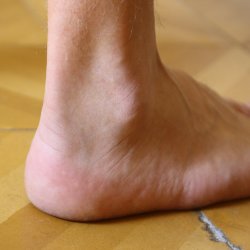Tightness in the gastrocnemius may play a major role in plantar fasciitis.
A new study examined 101 patients who suffered from ankle disorders. Of the patients who had plantar fasciitis, 80% had tightness in the gastrocnemius. Of those who had other foot and ankle disorders without plantar fasciitis, 45% had tightness in the gastrocnemius. Conversely, only 20% of subjects with no ankle disorders had gastrocnemius tightness.
This suggests that relieving tightness in the gastrocnemius could potentially relieve symptoms of plantar fasciitis.
Conclusions
Many experts have described how the fascial connections between muscles could potentially cause limitations in one area of the body to affect muscles in the same fascial chain. In this case, the plantar fascia and the gastrocnemius are connected by what is often referred to as the “Superficial Back Line” of fascia. This study lends credence to the “Anatomy Trains” model developed by Thomas Myers and presents a case for the interregional dependence of various tissues on the function of nearby muscles.
References
